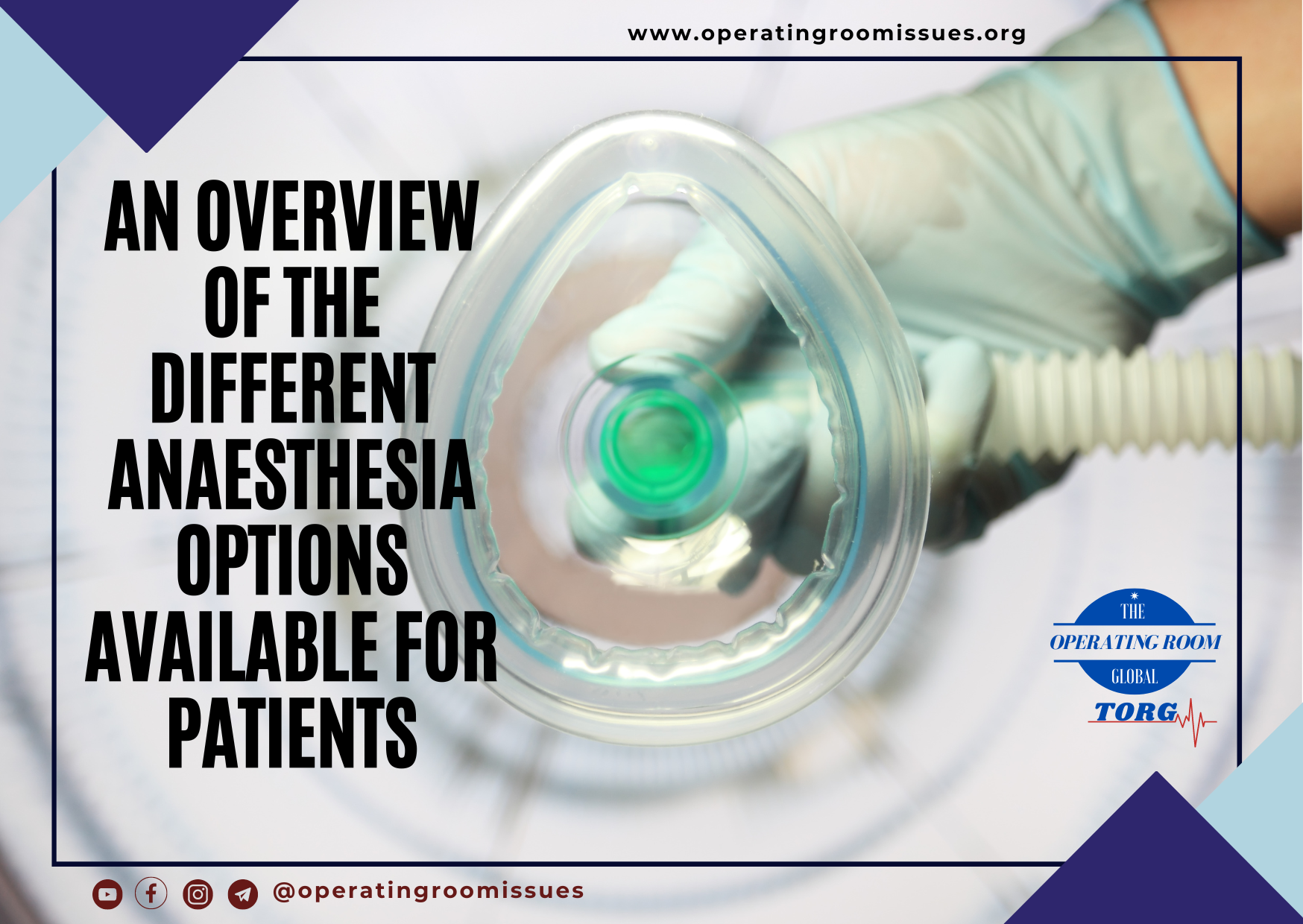Anaesthesia is a medical treatment that induces a temporary loss of sensation or consciousness to allow for pain-free medical procedures. There are several types of anaesthesia options available, each with their own benefits and risks. Here is an overview of the different types of anaesthesia options available for patients:
General Anaesthesia: General anaesthesia is the most common type of anaesthesia used for major surgeries. It is administered through an intravenous (IV) line or inhalation. It induces a state of unconsciousness, loss of sensation, and complete muscle relaxation.
Regional Anaesthesia: Regional anaesthesia involves numbing only a specific region of the body, such as an arm, leg, or the lower half of the body. It can be administered through an injection, catheter or nerve block, and it can be used for a wide range of surgeries, including orthopaedic, gynaecologic, and urologic procedures.
Local Anaesthesia: Local anaesthesia is a type of anaesthesia that numbs a small area of the body, typically the skin or the tissue underneath the skin. It is commonly used for minor surgeries or procedures, such as dental work or skin biopsies.
Sedation: Sedation is a type of anaesthesia that is administered through an IV line. It induces a state of relaxation and drowsiness, but the patient remains conscious and able to respond to verbal cues. It can be used for minor procedures, such as colonoscopies or dental work.
Monitored Anaesthesia Care (MAC): Monitored Anaesthesia Care involves the use of a combination of sedatives and pain medications to keep the patient comfortable during a procedure. It is commonly used for procedures that do not require full general anaesthesia, such as endoscopies or colonoscopies.
Local/Regional with Sedation: This is a combination of regional or local anaesthesia with sedation. It is commonly used for procedures that require the patient to be relaxed and drowsy but not fully unconscious, such as some orthopaedic surgeries.
It is important to discuss the different anaesthesia options with your anaesthesiologist or surgeon to determine which option is best for your individual needs and medical history.

